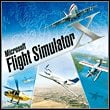Take-off | e.g. flight: Boeing 737-800
When we are at the holding line of runway 33, we switch off the taxi lights and switch on the landing and strobe lights. Now we should have a look at the autopilot panel and switch on the F/D (Flight Director) which indicates the optimal flight path and arm the A/T (autothrottle). Now we go to the upper panel and turn on the Probe Heat (Pitot tube heating - without it the tube may happen to freeze and our displays will indicate zero speed).
The autopilot is already set to the desired altitude and heading, so now we should set the maximum allowable speed of 250 knots. All aircraft must not exceed that speed below 10000 feet. That rule is not used in Flight Simulator, but it's good to remember about it.
So we contact Okecie Tower and receive take-off permission. We can enter the runway and get high!
To do it, we fully open the throttles. As soon as our speed reached approximately 145 knots, we gently raise the aircraft nose. When our -800 gets airborne, we raise the landing gear and continue our climb at 10-degree nose-up angle (see the horizontal, pink line on the left display). Now we gradually raise the flaps, switch on the autopilot by pressing the CMD A key and activate our previously set functions: heading HDG (328), speed SPD (250) and altitude ALT (8000 ft). Using the Vert Speed knob we set our vertical speed to +1800.
A short while later we contact Warsaw Departure and change our course, using the HDG knob on the autopilot panel. The aircraft starts its turn.
If you want the aircraft to be guided by GPS system (our flightplan is stored in its memory), switch the NAV/GPS (on the autopilot panel) to GPS position and press the VOR LOC button (light below the HDG SEL button should go off. If it doesn't, just click it).
When we reach 8000 feet, the ATC gives us new altitude of 14000 feet. So we set the new altitude on the autopilot panel and keep on climbing. When we cross 10000 feet, we can accelerate by setting 310-330 knots on the autopilot and switch off the landing lights. Next - according to instructions - we contact Radar frequency. We'll receive further climbing instructions - first to FL280, then to FL320. Climbing is controlled with the use of Vert Speed knob (vertical speed should be set between 1000 to 2500 fpm; too high rate may result in speed drop).
We should also remember, that when we cross 18000 feet, the altimeter should be reset to standard pressure 29.92 (B key) and speed hold mode on the autopilot should be changed from SPD to MCH. The information about pressure resetting is included in the Flight Checklist (to open it, click the third panel icon from the left).

Unfortunately the creators of FSX did not remember that the pressure resetting altitude is different in the USA and in Europe.
When we reach the cruise altitude - FL320, we can set the Mach speed to 0.79, sit back and relax.
You are not permitted to copy any image, text or info from this page. This site is not associated with and/or endorsed by the Microsoft or Aces Studio. All logos and images are copyrighted by their respective owners.
Copyright © 2000 - 2025 Webedia Polska SA for gamepressure.com, unofficial game guides, walkthroughs, secrets, game tips, maps & strategies for top games.
